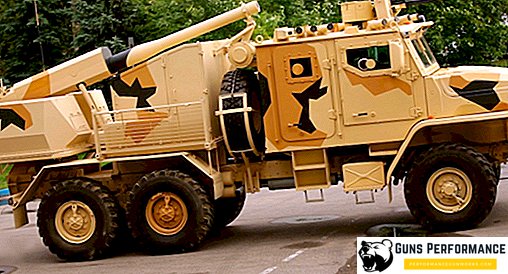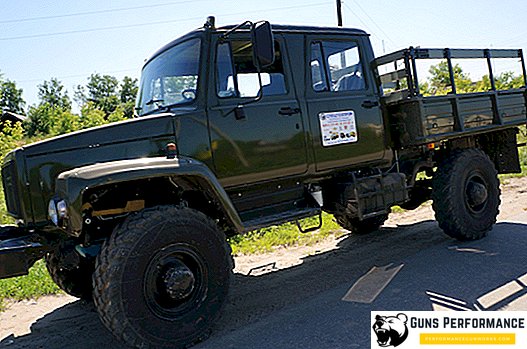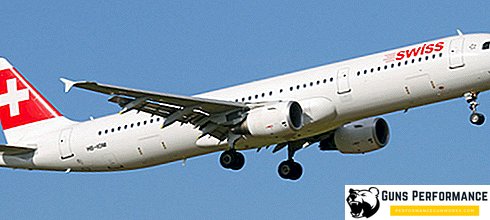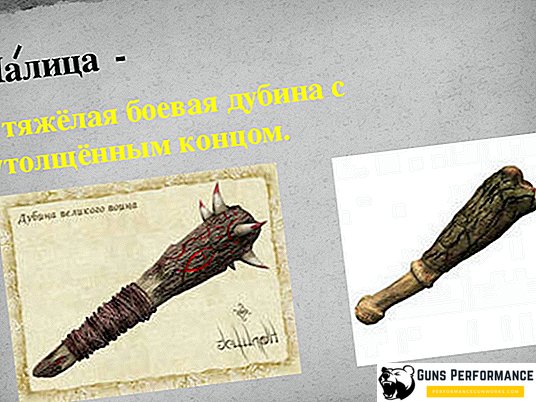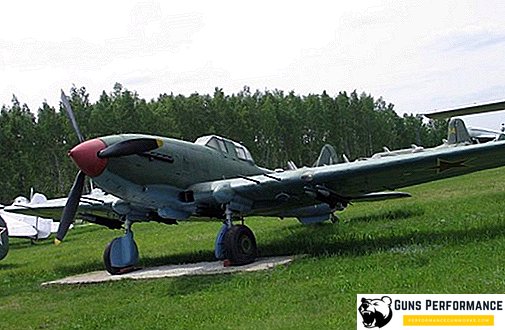
There are enough tragic and heroic pages in the history of the Russian fleet, the brightest of them are connected with the Russian-Japanese war of 1905. The heroic defense of Port Arthur, the death of Admiral Makarov, the Tsushima defeat. Today in Russia, probably, there is not a single person who has not heard about the suicidal feat of the cruiser Varyag, which has taken an unequal battle, about the death of a proud ship that fought to the last and did not wish to surrender to the enemy.
More than a hundred years have passed since that memorable battle, but despite this, the heroism of sailors and Varyag officers still lives in the memory of their descendants. On the example of this glorious ship brought up more than one generation of Soviet and Russian sailors. About "Varyag" films were made, songs were written.
However, do we know everything today about what happened in Chemulpo Bay on that memorable day of February 9, 1904? But before proceeding to the description of that memorable battle, a few words should be said about the Varyag armored cruiser, the history of its creation and service.

History and device cruiser
The beginning of the twentieth century was a time of conflict between the interests of two empires, which were rapidly developing - the Russian and the Japanese. The arena of their confrontation was the Far East.
The country of the rising sun, having gone through a rapid modernization at the end of the 19th century, wanted to gain leadership in the region and was not averse to expanding at the expense of the territories of neighboring countries. In the meantime, Russia continued its expansion, in St. Petersburg they were developing the project “Zheltorossiya” - settling part of the territories of China and Korea with Russian peasants and Cossacks and Russifying the local population.
For the time being, the Russian leadership did not take Japan seriously: the economic potential of the two empires seemed too incomparable. However, the rapid growth of the Japanese armed forces and fleet forced Petersburg to take a different look at its distant Asian neighbor.
In 1895 and 1896, a shipbuilding program was adopted in Japan, which provided for the creation of a fleet that would surpass the Russian Navy in the Far East. In response, Russia made a change in its own plans: the construction of warships began specifically for the Far Eastern region. Among them was the 1st rank armored cruiser Varyag.

The construction of the ship began in 1898 at the shipyard of the American Company William Cramp & Sons in Philadelphia. The construction of the cruiser was observed by a special commission sent from Russia.
Initially, the ship was planning to install heavier, but reliable and time-tested Belleville boilers, but later they were replaced by Nicloss boilers, which, although they differed by their original design and good performance, were not tested in practice. Later, this choice of powerplant for a cruiser caused a lot of problems: it often failed, upon arrival from the United States in Vladivostok, the Varyag immediately got up for repairs for several months.
In 1900, the ship was handed over to the customer, but the cruiser had a lot of flaws, which were eliminated until the ship departed home in 1901.

The cruiser hull had a forecastle, which significantly improved its nautical qualities. Coal pits were located along the sides at the level of bevels in the area of boiler houses and machine rooms. They not only supplied the power plant with fuel, but also provided additional protection for the most important components and mechanisms of the ship. The ammunition cellars were located in the fore and aft part of the vessel, which facilitated their defense against enemy fire.
The cruiser Varyag had an armored deck, its thickness reached 38 mm. Also, armor protection was provided with chimneys, rudder drives, elevators for lifting ammunition and muzzle parts of torpedo tubes.
The power plant of the cruiser consisted of twenty boilers of the Nikloss system and four-cylinder machines of triple expansion. Their total capacity was 20 thousand liters. pp., which allowed to rotate the shaft at a speed of 160 revolutions per minute. He, in turn, set in motion the two propellers of the ship. The maximum cruiser design speed was 26 knots.
Installing Nicloss's boilers on the ship was a clear mistake. Complicated and capricious in maintenance, they were constantly breaking down, so the boilers tried not to overload and the high speed - one of their main trump cards - the armored cruiser was used extremely rarely. Under the conditions of a weak repair base of Port Arthur, it was almost impossible to fully repair such equipment, therefore (according to some historians), by the start of the war, Varyag could not even provide 20 knots.
The ship was equipped with a powerful ventilation system, the cruiser’s rescue equipment consisted of two longboats, two steam boats and two rowboats, whaleboats, mooks and test boats.

The Varyag armored cruiser had a fairly powerful (for its time) electrical equipment, which was powered by three steam dynamos. The steering had three drives: electric, steam and manual.
The crew of the cruiser included 550 lower ranks, 21 officers and 9 conductors.
The main caliber of the Varyag was the 152-mm cannon system cannon. Their total number was 12 units. The guns were divided into two batteries of six guns: bow and stern. All of them were installed on special ledges that went beyond the line of the board, - sponsons. Such a decision significantly increased the shelling angle of the guns, but the problem was that the gun attendants were not protected not only by the towers, but even by armor shields.

In addition to the main caliber, the cruiser was armed with twelve 75-mm cannons, eight 47-mm and two 37-mm and 63-mm guns. Also on board the ship were installed eight torpedo tubes of various designs and calibers.
If you give a general assessment of the project, you should recognize that the Varyag armored cruiser was a very good ship of its class. It was distinguished by good seaworthiness, the general layout of the vessel was compact and thoughtful. Life support systems of the cruiser deserve the highest appreciation. "Varyag" had outstanding speed characteristics, which, however, were partially offset by the unreliability of the power plant. The armament and security of the Varyag cruiser were also not inferior to the best foreign analogues of that time.
On January 25, 1902, the cruiser arrived at a permanent duty station - at the Russian naval base in Port Arthur. Until 1904, the ship made several minor trips, and was also under repair for a long time due to frequent problems with the power plant. The outbreak of the Russo-Japanese War the armored cruiser met in the harbor of the Korean city of Chemulpo. The commander of the ship at that time was the captain of the 1st rank Vsevolod Fedorovich Rudnev.
Fight "Varyag"
January 26, 1904 (hereinafter all the dates will be given according to the "old style") in the port of Chemulpo there were two Russian warships: the cruiser Varyag and the gunner Koreorets. Also in the harbor were warships of other states: France, USA, Great Britain and Italy. Varyag and Koreets were at the disposal of the Russian diplomatic mission in Seoul.
It is necessary to say a few words about another Russian ship, which took the battle along with Varyag, the Korenets cannon boat. It was built in 1887 in Sweden and was armed with two 203.2 mm and one 152.4 mm gun. They were all outdated designs, firing black powder for a distance of no more than four miles. The maximum speed of the gunboat during its testing was only 13.5 knots. However, at the time of the battle, the Koreyian could not even develop such speed due to the strong deterioration of the machines and the poor quality of the coal. As it is not difficult to notice, the combat value of the “Koreyets” was practically zero: the firing range of his guns did not allow him to inflict at least some damage.
On January 14, the telegraph link between Chemulpo and Port Arthur was interrupted. On January 26, the Koreyan gunboat with the mail tried to leave the harbor, but was intercepted by a Japanese squadron. The gunboat was attacked by Japanese destroyers and returned to the port.
The Japanese squadron consisted of a significant force; it consisted of: a class 1 armored cruiser, a class 2 armored cruiser and four class II armored cruisers, an advice, eight torpedo boats and three vehicles. Commanded by the Japanese Rear Admiral Uriu. To deal with the "Varyag", the enemy was enough one ship - the flagship of the Japanese squadron of the armored cruiser "Assam". He was armed with eight-inch guns installed in the towers, in addition, armor defended not only the deck, but also the sides of this ship.
On the morning of February 9, the captain of the Varyag, Rudnev, received an official ultimatum from the Japanese: leave Chemulpo before noon, otherwise Russian ships will be attacked right on the roadstead. At 12 o'clock, the cruiser Varyag and the gunner Koreets left the harbor. A few minutes later they were discovered by Japanese ships and the battle began.
It lasted for one hour, after which the Russian ships returned to the raid. Varyag received from seven to eleven hits (according to various sources). The ship had one serious hole below the waterline, fires broke out on it, and enemy shells damaged several guns. The lack of protection of the guns led to significant losses among the gunners and the service personnel.

One of the shells damaged the steering gears and the uncontrolled ship sat down on the stones. The situation became hopeless: an immobile cruiser became an excellent target. It was at this moment that the ship received the heaviest damage. By some miracle, the Varyag managed to get off the rocks and return to the raid.
Later, Captain Rudnev in his report indicated that the fire of the Russian ships had sunk one Japanese destroyer and severely damaged the cruiser "Asama", and the other cruiser, "Takachiho", after the battle and completely drowned from damage received. Rudnev claimed that “Varyag” fired 1105 shells of various calibers against the enemy, and “Koreyets” - 52 shells. However, the number of unused shells, which the Japanese discovered after raising the "Varyag", indicate a significant overestimation of this figure.
According to Japanese sources, none of the ships of Admiral Uriu were hit, respectively, there was no loss in personnel. If the Russian cruiser hit the enemy at least once or not, it is still a matter of discussion. However, information that none of the Japanese ships was damaged was confirmed by officers of foreign ships who were in Chemulpo and were observing this fight. Also, almost all the major researchers of the Russian-Japanese war came to this conclusion.
As a result of the battle on the Varyag, an officer and 30 sailors were killed, and 6 officers and 85 sailors were wounded and contused, and about a hundred more crew members were slightly injured. Wounded and captain of the ship Rudnev. Almost everyone on the upper deck of the cruiser was killed or injured. The crew of the "Korean" had no losses.
Captain Rudnev decided that the Russian ships were no longer able to continue the battle, so the cruiser decided to sink, and the gunboat - to blow up. Varyag was afraid to blow up because of the danger of damaging other ships in the roadstead. The Russian ship "Sungari" was also flooded. The sinking of the cruiser turned out to be extremely unfortunate: at low tide, part of the ship was exposed, which allowed the Japanese almost immediately to remove their guns and valuable equipment from it.
The crews of the Varyag and the Koreyts switched to foreign ships and left Chemulpo. The Japanese did not interfere with the evacuation.

Already in early 1905, the cruiser was raised and adopted into the Japanese fleet. He was renamed "Soya" and became a training ship.
After battle
After the outbreak of the First World War, in which Japan was an ally of Russia, the cruiser Varyag was bought by the Russian government. Until the autumn of 1916 in Vladivostok, the ship was being repaired, on November 17, he arrived in Murmansk. Then the Russian government agreed to overhaul the Varyag in Liverpool. While the cruiser was being repaired, a revolution occurred in Petrograd, the British seized the ship and turned it into a floating barrack.
In 1919, "Varyag" was sold for scrap, but he did not get to the disposal site: he sat down on stones in the Irish Sea. Later, he was taken apart at the place of his death.

After the battle in Chemulpo, the Varyag and Korey teams became national heroes. All lower ranks received St. George's crosses and a nominal watch, the officers of the ships were awarded orders. The Russian Emperor Nicholas II personally received the sailors from “Varyag”. On the courage of Russian sailors composed verses. And not only in Russia: the German poet Rudolf Greinz wrote a poem Der Warjag, which was later translated into Russian and set to music. This is how the most popular song in Russia was born: "Our proud Varyag does not give up to the enemy."

The courage of the defenders of "Varyag" was also appreciated by the enemy: in 1907, Captain Rudnev was awarded the Japanese Order of the Rising Sun.
The attitude towards the "Varyag" and its commander among professional sailors was a bit different. The opinion was often expressed that the captain of the ship did not do anything heroic and could not even fully destroy his ship so that he would not get to the enemy.
Not too well was the massive rewarding of the team with St. George's crosses. At that time it was not accepted in Russia: “George” was given to a specific person for a perfect feat. A mere presence on a ship that, by the will of the commander, goes on the attack, is unlikely to fall into this category.

After the revolution, the feat of "Varyag" and the details of the battle in Chemulpo were long forgotten. However, in 1946, the film Cruiser Varyag, which completely changed the situation, was released. In 1954, all the surviving crew members of the cruiser were awarded the medals For Courage.
Since 1962, as part of the Soviet Navy (and then the Russian fleet) there has always been a ship that bears the name Varyag. Currently, the Varyag missile cruiser is the flagship of the Russian Pacific Fleet.
Could it be different?
History does not tolerate the subjunctive mood. This is a well-known truth - but could the Varyag armored cruiser break through to the main forces of the fleet and avoid death?
With the breakthrough tactics chosen by Rudnev, the answer is unequivocally negative. To reach the open sea together with a low-speed cannon, which could not give even 13 knots, this task clearly looks unreal. However, after the shelling of "Koreyets" on January 26, Rudnev could have understood that the war had begun and Chemulpo had become a trap. At the disposal of the captain "Varyag" was only one night: he could sink or blow up a gunboat, transplant her crew to the cruiser and leave the harbor under cover of night. However, he did not take advantage of this opportunity.

However, giving an order to destroy your own ship without a fight is a serious responsibility and it is unclear how the command would react to such a decision.
The Russian military command in the Far East is no less responsible for the loss of two ships. When it became clear that the war could not be avoided, "Varyag" and "Koreyets" had to be urgently withdrawn from Chemulpo. In isolation from the main forces of the fleet, they turned into easy prey for the Japanese.



